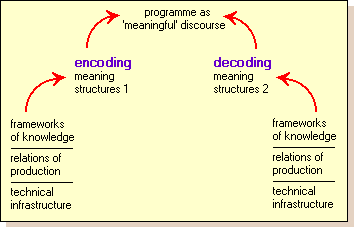The effects/ Hypodermic model
The hypodermic needle model is a model of communications. This model owes much to the supposed power of the mass media - in particular film - to inject their audiences with ideas and meanings in which the audience wholly receive and accept. The model is out of date but continues to influence present media texts in terms of and control in the media.

Uses and Gratifications
 Uses and gratifications is a more recent model of audience which suggest that there is a highly active audience making use of the media for a range of purposes designed to satisfy needs such as entertainment, information and identification. The audience ha s the power and they select the media texts that best suit their needs.
Uses and gratifications is a more recent model of audience which suggest that there is a highly active audience making use of the media for a range of purposes designed to satisfy needs such as entertainment, information and identification. The audience ha s the power and they select the media texts that best suit their needs.
The active audience
In this model, at its simplest level, the audience accept or agree with the encoded meanings, they accept and refine parts of the texts meanings or they are aware of the dominant meaning of the text but reject it for cultural, political or ideological reason. It recognises the importance of the analysis of signs, particularly visual signs, that shape so much of modern media output.
Mode of address
This refers to the way that a text speaks to the audience in a style that encourages them to identify with the text because it is 'there' kind of text. For example Friends is intended for a young audience because of the way it uses music and the opening credits to develop a sense of fun, energy and enthusiasm that the perceived audience can identify with.
This does not mean that other groups are excluded, merely that the dominant mode of address is targeted at the young.
Ethnographic model
The latest research into audience has resulted in an ethnographic model, which means that the researcher enters into the culture of the group and uses questions and interviews to try to understand media engagement from the perspective of the group. What seems to be emerging from this work is
a) the focus on the domestic context of reception of media texts
b) the element of cultural competence, and finally
c) technologies.

Uses and Gratifications
 Uses and gratifications is a more recent model of audience which suggest that there is a highly active audience making use of the media for a range of purposes designed to satisfy needs such as entertainment, information and identification. The audience ha s the power and they select the media texts that best suit their needs.
Uses and gratifications is a more recent model of audience which suggest that there is a highly active audience making use of the media for a range of purposes designed to satisfy needs such as entertainment, information and identification. The audience ha s the power and they select the media texts that best suit their needs.The active audience
In this model, at its simplest level, the audience accept or agree with the encoded meanings, they accept and refine parts of the texts meanings or they are aware of the dominant meaning of the text but reject it for cultural, political or ideological reason. It recognises the importance of the analysis of signs, particularly visual signs, that shape so much of modern media output.
Mode of address
This refers to the way that a text speaks to the audience in a style that encourages them to identify with the text because it is 'there' kind of text. For example Friends is intended for a young audience because of the way it uses music and the opening credits to develop a sense of fun, energy and enthusiasm that the perceived audience can identify with.
This does not mean that other groups are excluded, merely that the dominant mode of address is targeted at the young.
Ethnographic model
The latest research into audience has resulted in an ethnographic model, which means that the researcher enters into the culture of the group and uses questions and interviews to try to understand media engagement from the perspective of the group. What seems to be emerging from this work is
a) the focus on the domestic context of reception of media texts
b) the element of cultural competence, and finally
c) technologies.


No comments:
Post a Comment